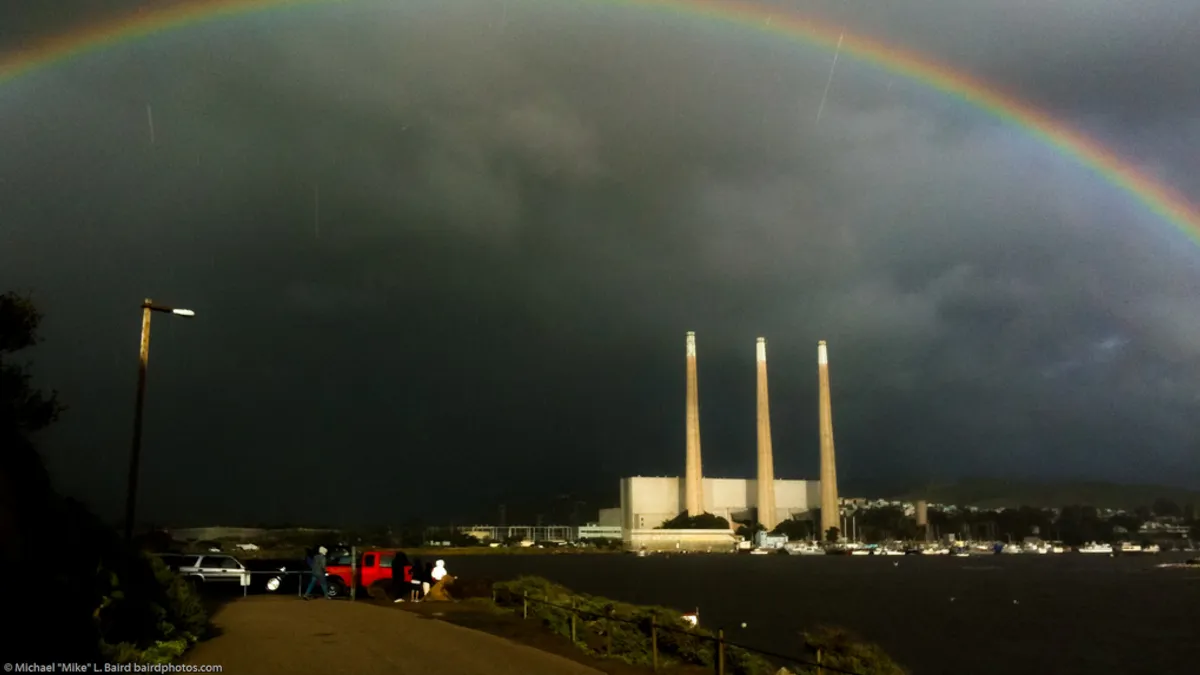Dive Brief:
-
The Environmental Protection Agency (EPA) on Tuesday unveiled its plan to replace the Obama administration’s Clean Power Plan with a less stringent carbon emissions rule for the power sector.
-
The EPA’s proposed Affordable Clean Energy (ACE) rule would require modest efficiency improvements at some coal plants and give states more latitude to set their own emissions standards, in contrast to the CPP, which pushed plant owners to invest in less-polluting sources.
-
The plan is subject to a 60-day comment period and is likely to face legal challenges from environmental groups, clean energy organizations and liberal states. EPA says it hopes to finalize the rule in early next year.
Dive Insight:
Replacement of the Clean Power Plan (CPP) represents a major step for Trump's deregulatory agenda, but its impact on both the coal sector and carbon emissions remains unclear.
The CPP, finalized in 2015, aimed to set minimum emission standards for power plants and allow states to decide how to meet them. Generators that could not meet the standards, like many coal plants, could offset their power with electricity from less-polluting sources, like natural gas or renewables.
The rule never went into effect. The Supreme Court put it on hold in 2016 in response to arguments from coal plant owners, who said the rule's design would force them to subsidize their competition.
The new ACE rule would allow states more leeway in setting those standards or opt out altogether, according to a fact sheet released by EPA. Unlike EPA regulations for new emission sources, "here the states are the ones that actually establish performance standards," the agency wrote.
For plants that do not meet their standards, EPA will publish a list of "candidate technologies" that coal generators can install to increase their efficiency "inside the fenceline" of the existing facility. Such candidates include variable frequency drives, upgrades to turbine blades and improved O&M practices, among others.
The proposed rule also aims to make it easier for plants to make those upgrades by modifying EPA’s New Source Review, which comes into play when a generator makes a major change to its output.
"Under this approach, only projects that increase a plant’s hourly rate of pollutant emissions would need to undergo a full NSR analysis," EPA said. "This proposal would ensure that coal-fired power plants can appropriately and efficiently reduce their CO2 emissions without undue burden or disruption."
EPA forecasts the rule will reduce carbon emissions from the power sector emissions, 0.7% to 1.5% from 2005 levels by 2030, in contrast to the Clean Power Plan, which aimed for a 19% cut.
Some power sector experts, however, say that the rule could actually increase greenhouse gas emissions if coal plants become more efficient and dispatch more often.
Ultimately, the impact of the new regulations will likely depend on whether utilities and generators decide to upgrade their coal plants for increased output, rather than invest in other generation sources — a point made by Montana regulator Travis Kavulla on Twitter:
Certain coal plants are economic on a fuel/O&M basis. But they face a reinvest-or-close decision. If reinvestment is unencumbered by New Source review and you have the prospect of running the plant for 10 years (as opposed to, say, 5) then today's EPA decision is non-trivial.
— Travis Kavulla (@TKavulla) August 21, 2018
Many sector experts doubt whether many coal operators will take that risk. Most coal generators are losing out today because they are not economic compared with other sources, said Alison Silverstein, a former staffer for the Federal Energy Regulatory Commission.
"The only coal plants this might help much are owned by [municipal utilities] and [electric cooperatives]," Silverstein wrote in an email. "Most munis and co-ops don’t face state price or resource mix regulation, they have captive customers, many don’t participate in centralized wholesale energy markets, and they don’t have deep credit so they can’t walk away from the plant mortgage. So they may keep borderline coal plants going until the pain is too great."












